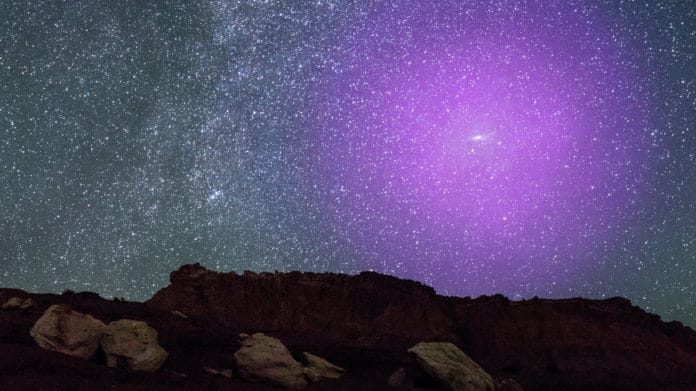The majority of this ordinary matter comprises neutrons and protons – particles called baryons that exist in the cores of atoms like hydrogen and helium. Just about 10% of baryonic matter is in the form of stars, and most of the rest inhabits the space between galaxies in strands of hot, spread-out matter.
Baryonic matter is spread throughout space; hence it is difficult to get a clear picture of their location and density around galaxies. Because of this incomplete picture, most of the universe’s baryons can be considered missing.
Now, an international team of researchers, with crucial contributions from physicists at the U.S. Department of Energy’s Lawrence Berkeley National Laboratory (Berkeley Lab) and Cornell University, has mapped these missing baryons’ locations. They have offered the best measurements of their location and density around groups of galaxies.
Scientists found that the baryons in the galaxy halos and these halos extend much farther than previously suggested.
Usually, the stars in the galaxy reside in a region that is about 100,000 light-years from the galaxy’s center. Scientists’ measurements have shown that the most distant baryons can extend about 6 million light-years from their center for such galaxies.
According to scientists, mapping this missing matter is complex than mapping the dark matter.
The new picture of galaxy halos was provided by the “ThumbStack” software that scientists developed. This software effectively maps those halos, even for groups of galaxies that have low-mass halos and those that are moving away from us very quickly.
Emmanuel Schaan, Chamberlain Postdoctoral Fellow in Berkeley Lab’s Physics Division, said, “Only a few percent of ordinary matter is in the form of stars. Most of it is in the form of gas that is generally too faint, too diffuse to be able to detect.”
For this study, scientists used the process called Sunyaev–Zel’dovich effect. The process explains how CMB electrons boost energy via a scattering process as they interact with hot gases surrounding galaxy clusters.
Simone Ferraro, a Divisional Fellow in Berkeley Lab’s Physics Division, said, “This is a great opportunity to look beyond galaxy positions and at galaxy velocities. Our measurements contain a lot of cosmological information about how fast these galaxies move. It will complement measurements that other observatories make and make them even more powerful.”
By modeling and interpreting the measurements, scientists explored their consequences for weak gravitational lensing and galaxy formation.
Scientists noted, “The computer algorithms should prove useful in analyzing “weak lensing” data from future experiments with high precision. Lensing phenomena occur when massive objects such as galaxies and galaxy clusters are roughly aligned in a particular line of sight so that gravitational distortions bend and distort the light from the more distant object.”
Ferraro said, “These measurements have profound implications for weak lensing, and we expect this technique to be very effective at calibrating future weak-lensing surveys.”
Scientists gathered the data from the ground-based Baryon Oscillation Spectroscopic Survey (BOSS) in New Mexico and CMB data from the Atacama Cosmology Telescope (ACT) in Chile, the European Space Agency’s space-based Planck telescope. Berkeley Lab played a leading role in the BOSS mapping effort and developed the computational architectures necessary for Planck data-processing at NERSC.
They used the Cori supercomputer at Berkeley Lab to develop the algorithm that counted electrons, allowing them to ignore the gases’ chemical composition.
Schaan noted, “It’s like a watermark on a banknote. If you put it in front of a backlight, then the watermark appears as a shadow. For us, the backlight is the cosmic microwave background. It serves to illuminate the gas from behind, so we can see the shadow as the CMB light travels through that gas.”
In addition to the lead authors from Berkeley Lab, UCB, and Cornell, researchers from 41 institutions in seven countries participated in the new studies.
Journal References:
- Emmanuel Schaan et al. Atacama Cosmology Telescope: Combined kinematic and thermal Sunyaev-Zel’dovich measurements from BOSS CMASS and LOWZ halos. DOI: 10.1103/PhysRevD.103.063513
- Stefania Amodeo et al. Atacama Cosmology Telescope: Modeling the gas thermodynamics in BOSS CMASS galaxies from kinematic and thermal Sunyaev-Zel’dovich measurements. DOI: 10.1103/PhysRevD.103.063514
